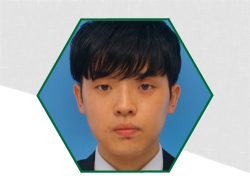In recent years, a novel laser irradiation scheme with GHz burst mode femtosecond (fs) laser pulse has attracted considerable attention because it can exhibit distinct characteristics in materials processing compared to the conventional irradiation scheme (single-pulse mode). Especially, we have demonstrated that linearly polarized GHz burst pulses can form unique lattice-like two-dimensional (2D) surface nanostructures. These structures are significantly different from the well-known one-dimensional (1D) stripe-patterned periodic surface structures know as laser-induced periodic surface structures by the single-pulse mode fs laser pulses. It is well known that the formation of nanostructures on solid materials by an intense laser beam can enrich the surface properties of materials for a variety of applications. In this study, we investigate the surface properties of surface nanostructures created by GHz burst mode for bioengineering applications, especially medical implants, in comparison with those created by the single-pulse mode.
In the experiment, linearly polarized fs laser pulses (wavelength: 1030 nm, pulse duration: 220 fs) in single-pulse and GHz burst modes (intra-pulse repetition rate: 4.88 GHz) were focused onto Ti surfaces. We cultured human mesenchymal stem cells (hMSCs) on the both Ti surfaces structured by the single-pulse and GHz burst modes. The hMSCs cultured on 1D stripe-patterned structures appeared to grow oriented along the stripe nanogroove, whereas those cultured on 2D lattice-like structures spread and grew in all directions. Therefore, we found that unique structures fabricated by the GHz burst pulses could affect the growth of hMSCs.
Keywords
- Femtosecond Laser
- Ghz Burst Mode
- Laser-Induced Periodic Surface Structures (Lipss)
- Surface Functionalization

